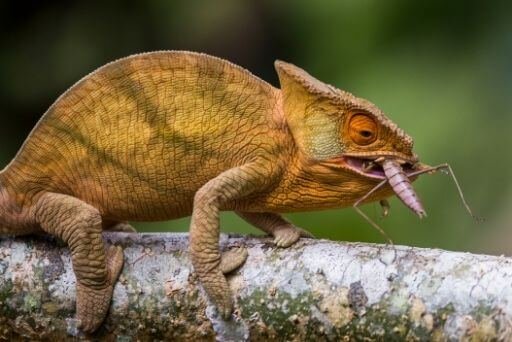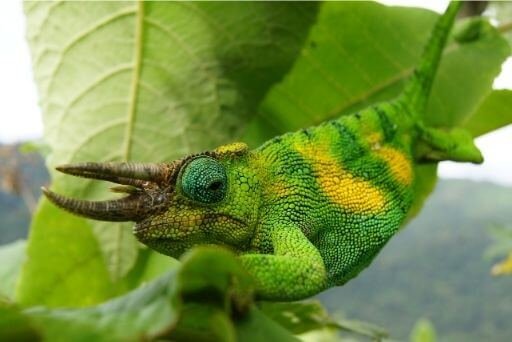Incredible Chameleons – How do chameleons change their colors and why?
Have you ever wondered how chameleons change their colors, why do chameleons change their colors, and can we keep them as pets? You must have seen people building large enclosures inside their home or office to keep chameleons as pets. They actually do make great pets and are quite educational for both adults and children. For some, they may seem creepy and weird, but if you hold a chameleon, you will understand how gentle they are. People are baffled by the ability of a chameleon to change color whatever surface it touches. A chameleon is a type of lizard that changes its color. How cool is that?
Keep on reading as we discuss some interesting facts about chameleons and disclose why and how they change their colors. Chameleons are truly one of the masterpieces of nature, and many characteristics make this reptile special, including eyes that can look in two different directions at once and parrot-like feet, using which they hold on to the branches. Let’s discuss further.

What is Chameleon?
A chameleon is a reptile that is part of the iguana suborder. It is one of the few animals on the planet that can change its skin color. But it is a misconception that these colorful lizards change their colors to match their surroundings. For chameleons, changing colors is an important part of communication. Scientists suggest that a chameleon changes its color in response to its emotions, such as fear, anger, or changes in humidity, temperature, or light. The brighter the color, the more attractive and dominant the male is to females. Females accept or reject their suitors based on their colors. A submissive male chameleon is gray or brown. Also, the color of a female chameleon can also indicate that she is pregnant.
Chameleon boasts special skin cells known as iridophore cells in each layer that allows them to rapidly change their color. It works in a way that a chameleon changes the structural arrangement of the upper layer of the cell by exciting or relaxing the skin. This leads to a color change.
Apparently, there are over 171 species of chameleons that call this planet their home. Like other reptiles, chameleons are cold-blooded. This means that they adjust their body temperature using the surrounding environment, like the sun’s heat or a table lamp. Humans, on the other hand, use their metabolism to generate heat, muscle contraction, and sweat to maintain a constant body temperature.
How big can chameleons grow?
Since there are so many species of chameleons, they grow in different sizes. Parson’s chameleon is the largest chameleon species that can grow up to 27 inches in length. The Oustalet’s chameleon or the Madagascan chameleon can grow up to 23 inches in length.
The smallest chameleon, the Leaf chameleon, has a unique distinction. It can grow up to 0.5 inches in length and is one of the smallest vertebrates discovered. This means that a leaf chameleon can comfortably sit on the head of a matchstick.
What’s interesting about chameleons is that they continue to grow and get big throughout their lives. Their skin gets too small as they grow. As a result, they will shed their old skin in bits and pieces.

Chameleon Habitat and Habits
Chameleons can be found in all parts of the world except for cold places. They live in Asia, Portugal, Spain, Africa, and Madagascar in rainforests, steppes, semi-deserts, and savannas. They prefer trees and bushes overground. However, there are some notable species that live on the ground. For instance, the horned leaf chameleon, which resembles a leaf, lives on dead leaves on forest surfaces.
Besides changing their skin color, most chameleons have a prehensile tail that is pure muscle and powerful enough to help them wrap around tree branches. They have large toes to cling to the branches.
The most astonishing feature of a chameleon is that they have eyes that can move independently from one another. This allows them to look in two different directions all at once. Their eyes are like a camera lens. They not only have a 360° view of the surroundings, but they can quickly zoom in and out their eyes.
Chameleons live their lives in solitude. They only communicate when it is time for mating. Once mating is done, the female chameleons don’t want the males to be around them.

What do they Eat?
Nobody can have patience as a chameleon. To catch their prey, they will creep along very slowly until they are sure that the prey is within their reach. They munch on insects and small birds. They use their tongue, which is twice as long as their bodies, to catch their prey. A chameleon’s tongue features a suction cup mechanism. So, when the chameleon shoots its tongue at the prey, the tongue will stick to the insect.

Do Chameleons Make Great Pets?
Not all chameleons make great pets. There is one particular species that is ideal as a pet – Jackson’s Chameleon. So, if you are considering having one as a pet, make sure you do your research.




